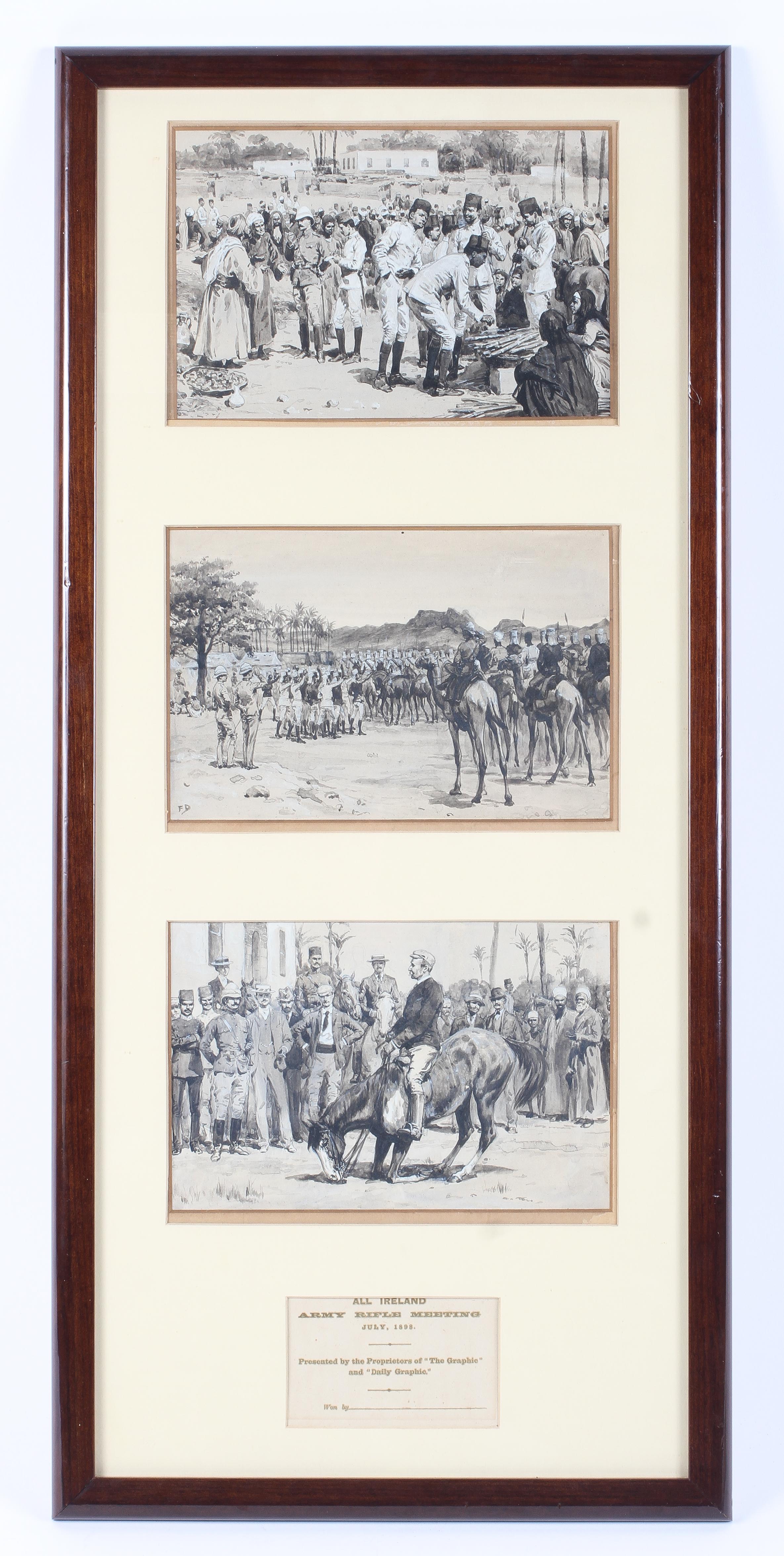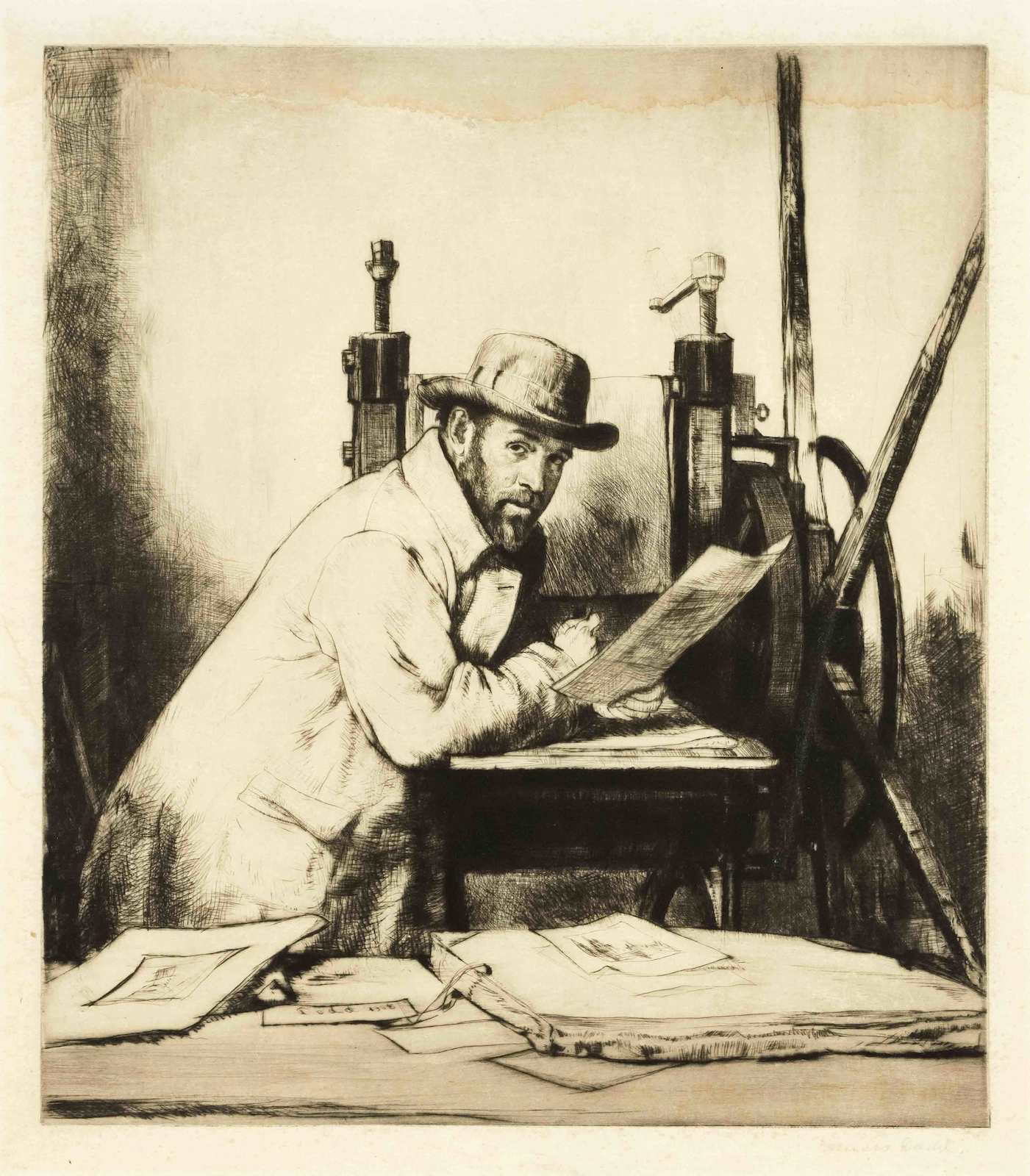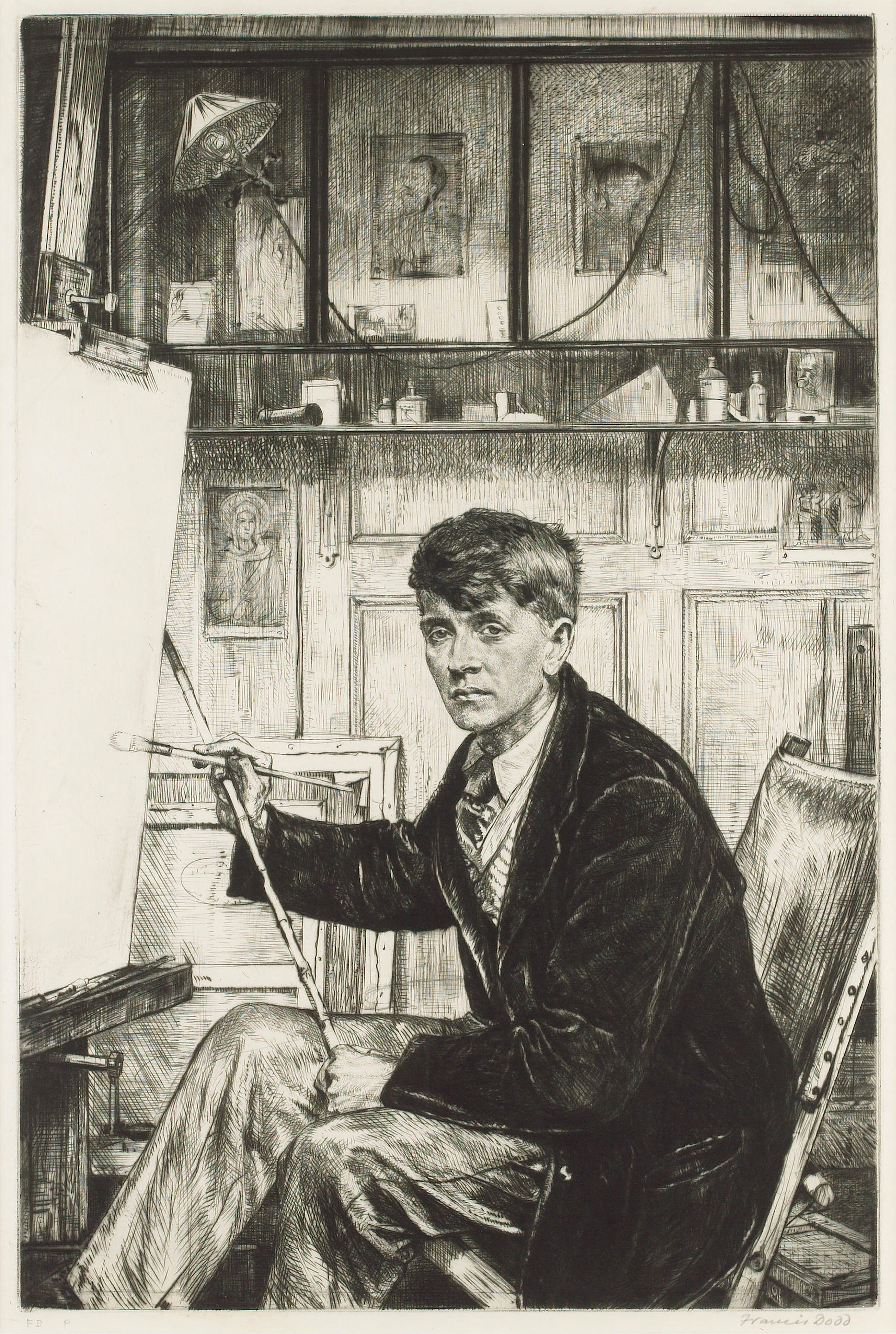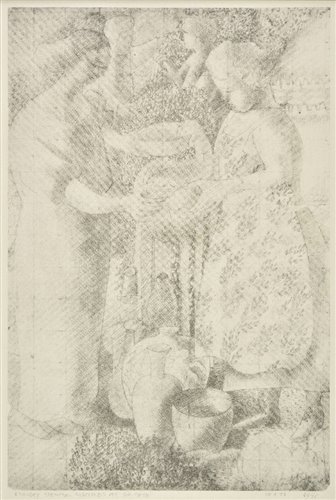DODD, Francis (artist). A pencil and crayon drawing of Dahoum, signed and dated in pencil 'F Dodd 1913', with further pencilled arabic inscription over an earlier, erased pencilled inscription (368 x 267mm), framed and glazed. Provenance : C.F. Bell (1871-1966, commissioned by Bell for:) -- T.E. Lawrence -- A.W. Lawrence (gift to:) -- Sidney Collard (gift to:) -- B.D. Thompson (exhibited: 'T.E. Lawrence', National Portrait Gallery, London, 9 December 1988-12 March 1989; item 67 in catalogue). A REMARKABLE PORTRAIT OF THE PROBABLE DEDICATEE OF SEVEN PILLARS OF WISDOM , FROM LAWRENCE'S COLLECTION. Ahmed (or 'Dahoum' as he was also known) had joined the excavation at Carchemish in 1911 as an assistant to Lawrence, who quickly appreciated his abilities, and acted as his mentor, encouraging him to learn Arabic and photography. When Lawrence fell seriously ill at the end of July 1911, he felt that his recovery was principally due to the care of Dahoum and Sheikh Hamoudi, and afterwards credited them with saving his life. In 1912 Dahoum was promoted to the position of Arab headman in the archeological team, and in 1914 assisted Lawrence and Woolley in the survey published as The Wilderness of Zin (see following lot). In August 1913 Lawrence took a short holiday in England, accompanied by Dahoum and Hamoudi. During the visit, C.F. Bell (Keeper of the Department of Fine Art at the Ashmolean), made arrangements for the artist Francis Dodd (1874-1949) to draw Dahoum, and intended to give the portraits to Lawrence. In a letter to Bell of 12 August, Lawrence described the sitting: 'Dodd turned up smiling in the morning, and got to work like a steam engine:--black & white, with little faint lines of colour running up and down it. No 1 was finished by midday, and was splendid; Dahoum sitting down, with his most-interested-possible expression ... he thought it was great sport--said he never knew he was so good-looking--and I think he was about right'. After discussing the other two drawings (no. 2 was unfinished, and no. 3 has since disappeared), Lawrence continued, 'I raved over [no. 1], and Dodd therefore gave [it] to Dahoum, who in some unknown way had asked him for one of them [...] Dahoum is taking it to Carchemish to show his people. I think I shall steal it later, since he says with them it will be only a nine-days wonder, and then done with. It's a most splendid thing ...' (M. Brown (ed.) The Letters of T.E. Lawrence (London: 1988), pp.50-51). The portrait was subsequently hung in the living room of the expedition's house in Carchemish (see J. Wilson T.E. Lawrence [exhibition catalogue] (London: 1989), where a photograph of the room showing the drawing is illustrated on p.40 as item 68 iii). Dahoum died during the second half of the war, between 1916 and 1918, when northern Syria suffered severe famine followed by a typhus epidemic -- Lawrence himself believed that Dahoum died a few months before the end of the war. Dahoum seems to have personified the Arab cause for which Lawrence pursued the desert campaign, and is generally believed to be the dedicatee of Seven Pillars of Wisdom : in 1919, in response to a letter from G.J. Kidston, Lawrence described his motives during the campaign, listing the first as 'Personal. I liked a particular Arab [i.e. Dahoum] very much, and I thought that freedom for the race would be an acceptable present' (M. Brown op . cit , p.169). This is reiterated in Lawrence's postscript to Seven Pillars of Wisdom : 'The strongest motive thoughout had been a personal one, not mentioned here, but present to me [...] It was dead before we reached Damascus [on 1 October 1918]'. Thus, Seven Pillars of Wisdom -- his chronicle of that campaign, and a gift as completely within his control as the Middle East was vulnerable to the self-serving interests of great-power politics -- was dedicated to Dahoum (Ahmed) as 'S.A.': 'I loved you, so I drew these tides of men into my hands , and wrote my will across the sky in s
DODD, Francis (artist). A pencil and crayon drawing of Dahoum, signed and dated in pencil 'F Dodd 1913', with further pencilled arabic inscription over an earlier, erased pencilled inscription (368 x 267mm), framed and glazed. Provenance : C.F. Bell (1871-1966, commissioned by Bell for:) -- T.E. Lawrence -- A.W. Lawrence (gift to:) -- Sidney Collard (gift to:) -- B.D. Thompson (exhibited: 'T.E. Lawrence', National Portrait Gallery, London, 9 December 1988-12 March 1989; item 67 in catalogue). A REMARKABLE PORTRAIT OF THE PROBABLE DEDICATEE OF SEVEN PILLARS OF WISDOM , FROM LAWRENCE'S COLLECTION. Ahmed (or 'Dahoum' as he was also known) had joined the excavation at Carchemish in 1911 as an assistant to Lawrence, who quickly appreciated his abilities, and acted as his mentor, encouraging him to learn Arabic and photography. When Lawrence fell seriously ill at the end of July 1911, he felt that his recovery was principally due to the care of Dahoum and Sheikh Hamoudi, and afterwards credited them with saving his life. In 1912 Dahoum was promoted to the position of Arab headman in the archeological team, and in 1914 assisted Lawrence and Woolley in the survey published as The Wilderness of Zin (see following lot). In August 1913 Lawrence took a short holiday in England, accompanied by Dahoum and Hamoudi. During the visit, C.F. Bell (Keeper of the Department of Fine Art at the Ashmolean), made arrangements for the artist Francis Dodd (1874-1949) to draw Dahoum, and intended to give the portraits to Lawrence. In a letter to Bell of 12 August, Lawrence described the sitting: 'Dodd turned up smiling in the morning, and got to work like a steam engine:--black & white, with little faint lines of colour running up and down it. No 1 was finished by midday, and was splendid; Dahoum sitting down, with his most-interested-possible expression ... he thought it was great sport--said he never knew he was so good-looking--and I think he was about right'. After discussing the other two drawings (no. 2 was unfinished, and no. 3 has since disappeared), Lawrence continued, 'I raved over [no. 1], and Dodd therefore gave [it] to Dahoum, who in some unknown way had asked him for one of them [...] Dahoum is taking it to Carchemish to show his people. I think I shall steal it later, since he says with them it will be only a nine-days wonder, and then done with. It's a most splendid thing ...' (M. Brown (ed.) The Letters of T.E. Lawrence (London: 1988), pp.50-51). The portrait was subsequently hung in the living room of the expedition's house in Carchemish (see J. Wilson T.E. Lawrence [exhibition catalogue] (London: 1989), where a photograph of the room showing the drawing is illustrated on p.40 as item 68 iii). Dahoum died during the second half of the war, between 1916 and 1918, when northern Syria suffered severe famine followed by a typhus epidemic -- Lawrence himself believed that Dahoum died a few months before the end of the war. Dahoum seems to have personified the Arab cause for which Lawrence pursued the desert campaign, and is generally believed to be the dedicatee of Seven Pillars of Wisdom : in 1919, in response to a letter from G.J. Kidston, Lawrence described his motives during the campaign, listing the first as 'Personal. I liked a particular Arab [i.e. Dahoum] very much, and I thought that freedom for the race would be an acceptable present' (M. Brown op . cit , p.169). This is reiterated in Lawrence's postscript to Seven Pillars of Wisdom : 'The strongest motive thoughout had been a personal one, not mentioned here, but present to me [...] It was dead before we reached Damascus [on 1 October 1918]'. Thus, Seven Pillars of Wisdom -- his chronicle of that campaign, and a gift as completely within his control as the Middle East was vulnerable to the self-serving interests of great-power politics -- was dedicated to Dahoum (Ahmed) as 'S.A.': 'I loved you, so I drew these tides of men into my hands , and wrote my will across the sky in s















Testen Sie LotSearch und seine Premium-Features 7 Tage - ohne Kosten!
Lassen Sie sich automatisch über neue Objekte in kommenden Auktionen benachrichtigen.
Suchauftrag anlegen